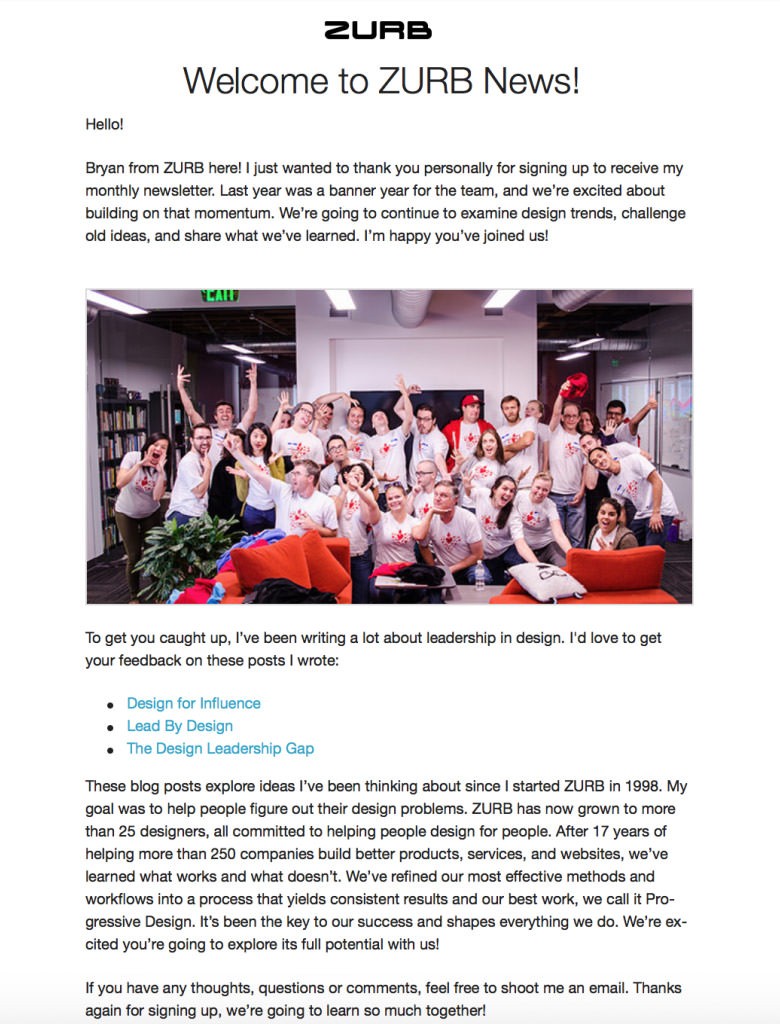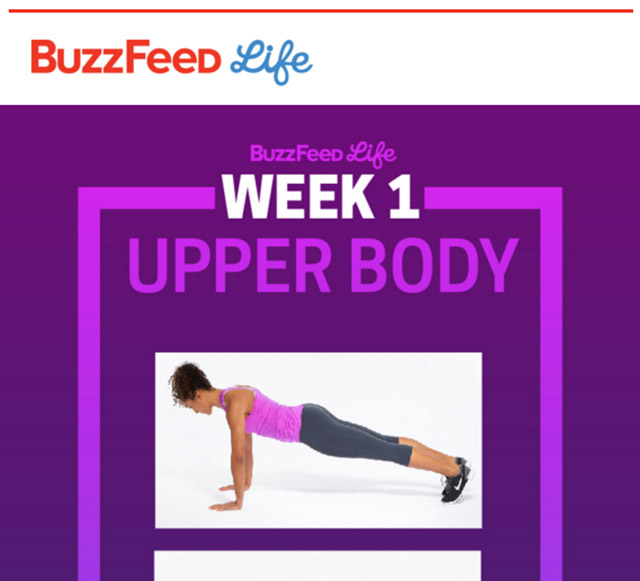Discover how automation can put the “personal” back in personalization
Is your personalized marketing really that personal?
The overwhelming majority of consumers prefer personalized experiences when engaging with their favorite brands (more than 70% of consumers in the US and UK!). Personalized experiences are not only very gratifying, but they satisfy two very important, and absolutely necessary, digital age value points: the consumer need for control, and information overload prevention.
The personalization trend has picked up steam in recent years as marketers and brands now recognize the great benefits of providing consumers a personalized experience, including: faster response times, improved engagement rates, and higher conversion rates. Yet, as the digital age has continued to advance, a troubling trend has developed… personalization no longer appears to be personal.
Contrary to what appears to be popular opinion, “Hello, <Insert Name>, we have a special offer!” is not personalization. Remember, today’s consumers are tech savvy, and well versed in the methods of digital marketing. They understand that the more times their name and contact information appears on a promotion or ad, the more likely it is that the engagement was anything but personal.
There are two pertinent questions that we must ask:
- How does this affect consumers?
- How have marketers arrived to this point?
Answering the first question is easy – they don’t like it.
While advances in data mining and analysis have granted marketers the ability to track consumer behaviors and preferences like never before, personalization doesn’t necessary equate to relevancy. For example, using a consumer’s name 10 times in the two paragraphs of a welcome email does not demonstrate that you know anything about them… it in fact conveys the opposite. Another important point to remember: digital age consumers want to know that brands and marketers understand them.
Moving on the to second question, in order to understand the current state of personalized marketing, and how marketers can develop a more “personal” relationship with consumers, we need to take a more indepth look at how our digital age reliance on technology has detrimentally influenced our creative ability to market.
Let’s quickly review!
Digital Age Tech & The “Personalization” Problem
Across the entire spectrum of the diverse digital age, products and services are being infused with cutting edge tech to streamline the purchasing process. Consumers have become dependent on tech to fuel their need for convenience, and marketers have come to rely heavily on tech-infused processes for delivering content and value to consumers. Some of the most recent marketing advancements owed to technology include:
- Mobile Technology: The consumer value paradigm has shifted towards small screen optimization and responsiveness. Today’s consumers research, purchase and connect all via mobile devices. Tech-infused omni channel solutions now provide consumers the ability to move between mobile applications and websites with fast loading times and responsive content. The next step in omni channel mobile solutions, and one that is on the cusp of being fully adopted, is that of wearable technology. In the future, mobile will mean wearable, and the omni channel will become a fully integrated part of the consumer and their experience.
- Big Data: Data collection for marketing in the digital age means producers have the ability to optimize content and marketing solutions based on consumer information. Data in the digital age has allowed marketers to share relevant content with customers, and has provided the ability to adapt to consumer demand in real time. In turn, this data responsiveness has improved the overall consumer perception of brand value, because consumers receive a more personalized experience.
- Global Reach: The digital world is a global world, and perhaps the most important contribution of technology from the last 20 years is its ability to connect diverse consumers from diverse cultures. As today’s technology has brought fast and affordable internet to most of the world, omni channel marketing strategies must now accommodate a global audience and implement methods for the global transfer of value.
As we can see, the technology of today has provided both consumers and marketers alike with a wealth of advancements. Yet, for all it has given, it has also dulled one very important aspect of digital marketing:
Our ability to deliver consumer intimacy and personalize.
Consumers have become lost in an endless sea of technological noise, wandering between a multitude of similar brands that provide similar products, services, and first name “personalization.” Digital marketers have fallen into a predictable marketing pattern, and as a result, they are losing their ability to transfer value.
Remember, the goal of any omni channel marketing campaign is to provide consumers with value. Value is defined by the Oxford English Dictionary as:
“The regard that something is held to deserve; the importance, worth, or usefulness of something.”
As Forrester details in its 2015 study, “The Power of Personalization,” not only do consumers find importance, worth, and usefulness in receiving personalized and practical information, but it has come to define their digital age relationships with brands. Omni channel marketing meets this consumer need through a mutually beneficial exchange of value. Consumers receive a personalized experience with quality goods and services, and producers receive consumer loyalty and business. If we no longer have the ability to build intimate relationships, it is hard to satisfy consumers.
Recognizing that successful brands provide their consumers intuitive and personalized experiences, the natural solution to meet the needs of those consumers expecting “The Internet of Me” is nothing more than a new take on an old trick – automated personalization.
Let’s take a look!
The Solution – Automated Personalization
The digital age focus of marketers when it comes to automated personalization should the efficient extraction of consumer insight from data.
It is the key to putting the “personal” back in personalization, as automation technology can seamlessly adapt to changes in consumer behavior and preferences. It is important to remember that the notion of personalized marketing in the digital age was founded upon email marketing. Back in the early beginnings of the digital age (2006/2007), marketers discovered that the clickthrough rates for emails significantly increased when a potential consumer’s first name was placed in the subject line. With this new weapon of marketing warfare the email was brought back from the dead, and the modern digital age developed.
There was just one problem – consumers caught on.
Consumers quickly realized that the “Hello, <Insert Name>” email subject lines were not true personalization, and that brands didn’t know them any better than they originally thought. It was gimmick marketing at its worst. Recalling this lesson from the past, it is easy to understand the importance of marketing automation technology today. Automated personalization leaves the heavy lifting to technology. It adapts to consumer preferences, provides relevance, and allows marketing teams to focus on understanding the consumer experience. By studying the path that digital age consumers take, and creating targeted messages for each phase, automation software can then decide when, where and how to best apply personalized consumer experiences.
Yet, many digital marketers are often overwhelmed by the immense volume of data that is involved with automated marketing. According to a recent study by Monetate, even though 94% of marketers understand how valuable personalization is to digital age success, and 91% of marketers believe successful brands market with data, the study found 95% of all data remained “untapped,” while 26% of organizations do not use real-time on-site behavior to personalize experiences.
The reality of automated personalization is that it unlocks new visitor data, efficiently uses pre-existing data, and consistently improves to make sure that content is put in the best possible position to be seen! Combined with omni channel solutions, marketers can leverage consumer interactions and create personalized and intimate experiences across multiple channels of consumer communication.
What are some digital age examples of putting the “personal” back in personalization?
Let’s take a look.
Automation Example #1 – ZURB (Welcome Emails)
Silicon Valley based design company ZURB is creatively using email automation to connect with their subscribers by transferring a mixture of design knowledge and intimacy.
According to Daniel Codella, a marketer at ZURB, the company has a variety of newsletter templates that can be modified and personalized for different segmented consumers and target audiences. ZURB has implemented a variety of different email templates that will automatically send subscribers a highly unique welcome email that includes reading suggestions based on previously noted interests. According to the company, these emails now have around a 70-75% open rate and a 40-45% click through rate.
In the words of Codella himself:
“ZURB’s mantra as a company is “design for people.” People are at the center of everything we do. We think about who the user is, and what they need. The emails we send are going out to thousands of people. We don’t think of the members of our lists as numbers — we think of our users as people, and constantly consider what value we can provide them.”
In an age where consumers question how well their favorite brands know them, this type of automation and personalization creates a competitive edge. While ZURB is not going to win any awards for their email design (see picture above), this type of personalized automation is highly effective in transferring value. This basic approach can, and should, be implemented and improved upon through personalized creativity.
Potential strategies for improvement include:
- Sending product recommendations based on purchase history
- Inviting interaction via social media buzz campaigns
- Offering promotions and discounts based on interests
- Providing access to valuable information via webinars/tutorial videos
All of these options offer a degree of personalized value; how much so will depend on the consumer/potential consumer and their prior interactions.
Automation Example #2 – BuzzFeed (Subscriber Engagement)
Typically recognized for its “top ten” lists focusing on need to know Game of Thrones facts, digital media/news master BuzzFeed does a lot more than set the agenda for Millennial pop culture. Recently, the company has put together a growing email marketing campaign focused on delivering valuable content to its readers via automated processes.
BuzzFeed has created more than 20 unique email newsletters that are specifically designed to meet the personalization needs of readers. From politics, to health, to sports, BuzzFeed has studied what their readers want, and they have engineered their emails to deliver value. In fact, one of the top five referrers to their website is email, with each visitor spending three minutes or longer on their website!
The picture above is an example of a knowledge course that BuzzFeed automatically personalizes and sends to subscribers via email. By leveraging browsing history and other data, BuzzFeed is able to send along multi-lesson courses that deliver value to their readers. These courses not only provide knowledge, but they automatically keep readers engaged over a number of weeks. BuzzFeed segments their actual and target audiences by interest, as consumers are more likely to opt out of emails when the content they receive is irrelevant. As a mass media publisher, BuzzFeed recognizes the need to send their dedicated readers content that is unique to their interests, and at strategic intervals.
BuzzFeed is a great digital age example that even the largest media sites can use automation to drive engagement and keep readers engaged.
Example #3 – Caribou Coffee (Organic Customization)
Caribou Coffee is the nation’s second largest specialty coffee company, with close to 500 coffeehouses. The company is a great example of the digital age balance needed to successfully provide an automated and personalized consumer experience. Caribou takes the “wait and see” approach of allowing their consumers to shop without overwhelming opt-in noise, while simultaneously (and subtly) encouraging consumer / brand interaction.
By implementing a mix of standard and creative capture points, Caribou is able to take note of consumer preferences without altering the organic nature of the consumer experience. While the website does include the standard registration and email opt-in form, ecommerce customization is where Caribou’s personalization truly shines. From roast varieties to syrup flavors, Caribou is able to capture consumer preferences, and in turn, use this data to provide homepage suggestions for the consumer’s next visit.
Take note of the homepage pictured above… it does not exaggerate the need for email opt-ins and gimmicky subscriptions. What the homepage is actually doing is providing unique coffee suggestions based on the previous search, customization, and purchase history of the consumer. The suggestions by their very nature are organic, and not at all overwhelming. Through personalized content, imagery, and promotions, Caribou can continuously update individual user content for a fresh look, and a more intimate consumer relationship. With richer options, deeper content, and organic personalization, Caribou is a great example of automated personalization in the digital age.
As Mike Tattersfield, president and CEO, recently told Forbes:
“Our guests are extremely loyal and passionate about our product offerings, and so we are thrilled to be able to reward them for simply being our fans.”
In Conclusion….
Marketers can no longer survive by focusing on single channels and single solutions… the consumer journey will not support it. Today’s marketers must creatively integrate multiple channels while simultaneously providing an intimate, personal, and relevant consumer experience. In other words, marketers must put the “personal” back in personalization. For this task, there is no better solution than automation.






